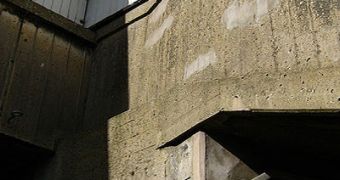University of Liverpool researchers have successfully tested a new type of concrete that was specifically designed to reduce the damage of bomb explosions. Needless to say, the new material could bring about a new type of security in countries prone to bomb attacks, such as Iraq and Afghanistan, where shaky structures account for many deaths in case of explosions. People who are buried under the remains of their homes have little chances of being rescued, because the houses regularly collapse altogether. With the new type of concrete, they could potentially withstand the effects of an explosive device, even if it's planted nearby.
Australia has already employed this type of concrete in its official buildings, constructing reinforced roofs that can successfully avert mortar attacks. The material can absorb about 1,000 times more energy than standard concrete, which also makes it ideal for constructing litter bins, as well as explosion barriers on various structures. It has not entered current use in the UK, where it was first created, but plans are in motion to reinforce existing buildings as soon as possible.
"We carried out a number of high explosion tests; gradually reducing the distance to the explosive charge to examine the concrete's bending strength and capacity to absorb energy. Our results showed the new UHPFRC material had an enhanced tension and compression strength of 500% greater than conventional concrete. This makes UHPFRC a suitable material for use in anti-terrorism applications," UL professor Steve Millard shares.
"Many of London's tourist landmarks are surrounded by concrete to protect against terrorist attacks. However, the material does not absorb sufficient energy to prevent the creation of shrapnel, which is one of the most lethal consequences of a bomb blast. UHPFRC is different because needle-thin steel fibers are added into the concrete mix instead of steel reinforcing bars to increase its tensile strength," he adds.
According to engineers at the University of Liverpool, UHPFRC stands for Ultra High Performance Fiber Reinforced Concrete. It's a type of concrete especially designed to employ larger dynamic bending capabilities, meaning that it's less likely to produce shrapnel.

 14 DAY TRIAL //
14 DAY TRIAL //